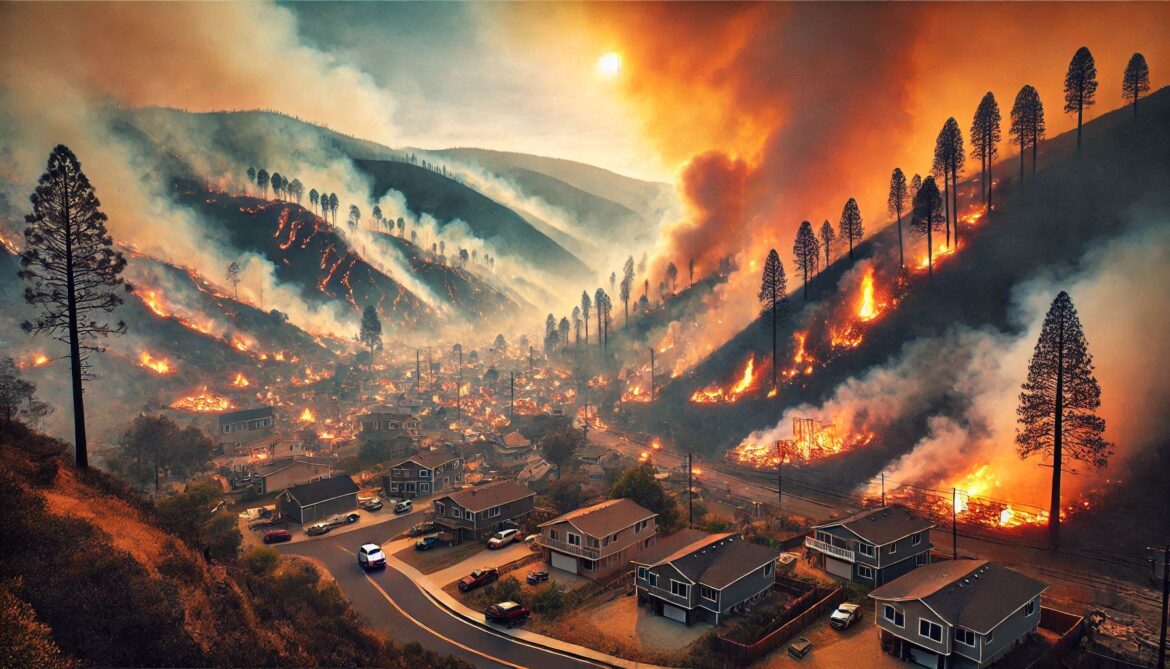
California is no stranger to wildfires, but in recent years, the state has witnessed an escalation in the frequency and severity of fire outbreaks in California. As we enter 2025, Los Angeles is grappling with the devastating effects of this crisis, with wildfires ravaging vast swaths of the region. From the fiery hills to the urban outskirts, fire outbreaks in California have become a force that tests the resilience of the state’s residents, first responders, and communities at large. But amid the destruction, an unyielding spirit of determination rises. Communities are uniting, resources are being mobilized, and solutions are being explored with an unwavering commitment to protecting life, property, and the environment.
The Relentless Rise of Fire Outbreaks in California
In 2025, California is once again in the grip of severe fire outbreaks in California. The situation has become a grim reminder of how vulnerable the region is to wildfires, especially during the dry seasons. But while wildfires have always been a part of California’s natural history, the intensity of these fires is a direct result of multiple factors—chief among them being climate change.
According to experts, fire outbreaks in California are more than just the result of dry conditions; they are an intersection of higher temperatures, extreme drought, and erratic weather patterns that make these fires harder to control. The state’s fire season, which was once a predictable event, is now a year-round risk. Wildfires in California are growing in scale and speed, fueled by record-breaking heat and increasing vegetation.
Stay updated on the current fire situation with Wildfire Updates California.
Climate Change and California Wildfires
The link between climate change and California wildfires is undeniable. As temperatures rise and droughts become more frequent, the risk of fire outbreaks in California becomes more pronounced. In fact, Los Angeles and other parts of California have seen wildfires spread at unprecedented rates in recent years. The factors contributing to this escalation include prolonged dry spells, earlier snowmelt, and more intense storms that create favorable conditions for fires to ignite and spread.
Read more about the impact of climate change on wildfires.
How Wildfires Are Affecting Communities in Los Angeles
As Los Angeles fights its battle against fire outbreaks in California, the emotional toll is heavy on residents. Families are displaced, homes are lost, and air quality has reached dangerous levels. The city’s efforts to curb these fires have been intense, with local government agencies, firefighters, and volunteers working around the clock to mitigate damage. However, the ongoing fire outbreak in California continues to test their capacity to respond effectively.
The impact on communities is not just limited to physical destruction but extends to long-term health risks. Wildfire smoke can travel hundreds of miles, affecting people far beyond the immediate danger zones. In Los Angeles, residents are constantly battling poor air quality, which contributes to respiratory issues, especially among children, the elderly, and those with pre-existing health conditions.
Amid these challenges, however, the residents of Los Angeles have displayed incredible resilience. While fire outbreaks in California continue to wreak havoc, the community spirit is shining through. People are volunteering, donating supplies, and offering shelter to those displaced by the fires. The community’s response to this ongoing crisis exemplifies their unwavering determination to support each other.
How Firefighters and First Responders Are Tackling Fire Outbreaks
The bravery of firefighters and first responders cannot be overstated when it comes to fire outbreaks in California. In 2025, the challenges they face are more significant than ever before. As wildfires grow more intense, these professionals are often on the front lines, risking their lives to protect others. Los Angeles Fire Department (LAFD) has been actively coordinating efforts with other local and state agencies to contain the blaze.
Firefighters are using a combination of tactics to manage the fire outbreaks in California, including controlled burns, firebreaks, and air support. Firebreaks are crucial in preventing fires from spreading uncontrollably, especially when the winds are strong. Air support in the form of helicopters and planes is also essential for delivering water and fire retardants from the sky, enabling the firefighters on the ground to tackle the flames more effectively.
However, despite their efforts, the severity of the fire outbreak in California means that resources are constantly being stretched thin. The region’s fire departments have called for greater support from the state and federal government to ensure they have the resources they need to continue their heroic work.
Emergency Preparedness and Evacuation Plans
For residents in areas prone to fire outbreaks in California, preparation is key to survival. In Los Angeles, emergency preparedness plans are being updated regularly in response to the growing threat of wildfires. Residents are encouraged to have evacuation routes in place and maintain emergency kits with essential supplies, such as food, water, medications, and masks for protection against smoke inhalation.
Local authorities have worked to ensure that evacuation routes are clear and that shelters are equipped to accommodate those displaced by the fires. The goal is to keep the community safe while ensuring that everyone knows what steps to take should a fire outbreak in California impact their area.
One of the key recommendations for fire preparedness is to create defensible space around homes. This means clearing dry vegetation and ensuring that trees are trimmed away from structures. This simple but effective step can significantly reduce the risk of a wildfire spreading to homes and buildings.
The Role of Technology in Combating Fire Outbreaks
Technology plays an increasingly important role in managing fire outbreaks in California. In recent years, advanced fire detection systems, drones, and data analytics have been deployed to enhance firefighting efforts. These technologies allow first responders to assess the situation more quickly, predict fire behavior, and deploy resources more effectively.
For example, California has invested in satellite technology that can detect wildfires in real-time, allowing fire departments to respond much faster. Additionally, drones are being used to monitor the fires from the air, providing critical information that helps direct firefighting efforts.
The use of artificial intelligence (AI) in predicting fire behavior is also helping to improve preparedness. AI models can analyze data from weather stations, historical fire patterns, and real-time observations to predict where fires are most likely to spread. These predictions help fire teams take proactive measures and ensure that resources are allocated where they are most needed.
Sustainable Solutions for the Future
While fire outbreaks in California continue to pose significant challenges, experts are exploring sustainable solutions that could help mitigate the risk of future fires. One approach is the creation of fire-resistant landscapes through forest management practices such as controlled burns and thinning overgrown areas. These methods reduce the amount of combustible vegetation and create firebreaks that can slow the spread of fires.
Additionally, increasing the use of fire-resistant building materials and designs is another way to combat the impact of fire outbreaks in California. Homes and businesses in high-risk areas can be built with materials such as metal roofs, tempered glass windows, and fire-resistant siding to reduce the likelihood of catching fire.
Finally, addressing the root cause of the issue—climate change—is critical for long-term solutions. By reducing carbon emissions and investing in renewable energy sources, California can begin to slow the effects of climate change and create a more sustainable future. While the road ahead is challenging, the collective efforts of individuals, communities, and policymakers can pave the way for a more resilient California.
Conclusion
The ongoing fire outbreaks in California serve as a stark reminder of the challenges posed by climate change and human impact on the environment. Los Angeles, in particular, is facing the brunt of this crisis, with communities coming together to support each other in the face of adversity. From firefighters and first responders to local residents, everyone is playing a part in combating this ongoing battle.
Despite the hardships, there is hope. The courage, resilience, and ingenuity of California’s people have already made a significant difference. By embracing technology, improving emergency preparedness, and pursuing sustainable solutions, the state can pave the way for a future where fire outbreaks in California are no longer a deadly threat. The journey toward resilience may be long, but California’s spirit remains unbroken.


